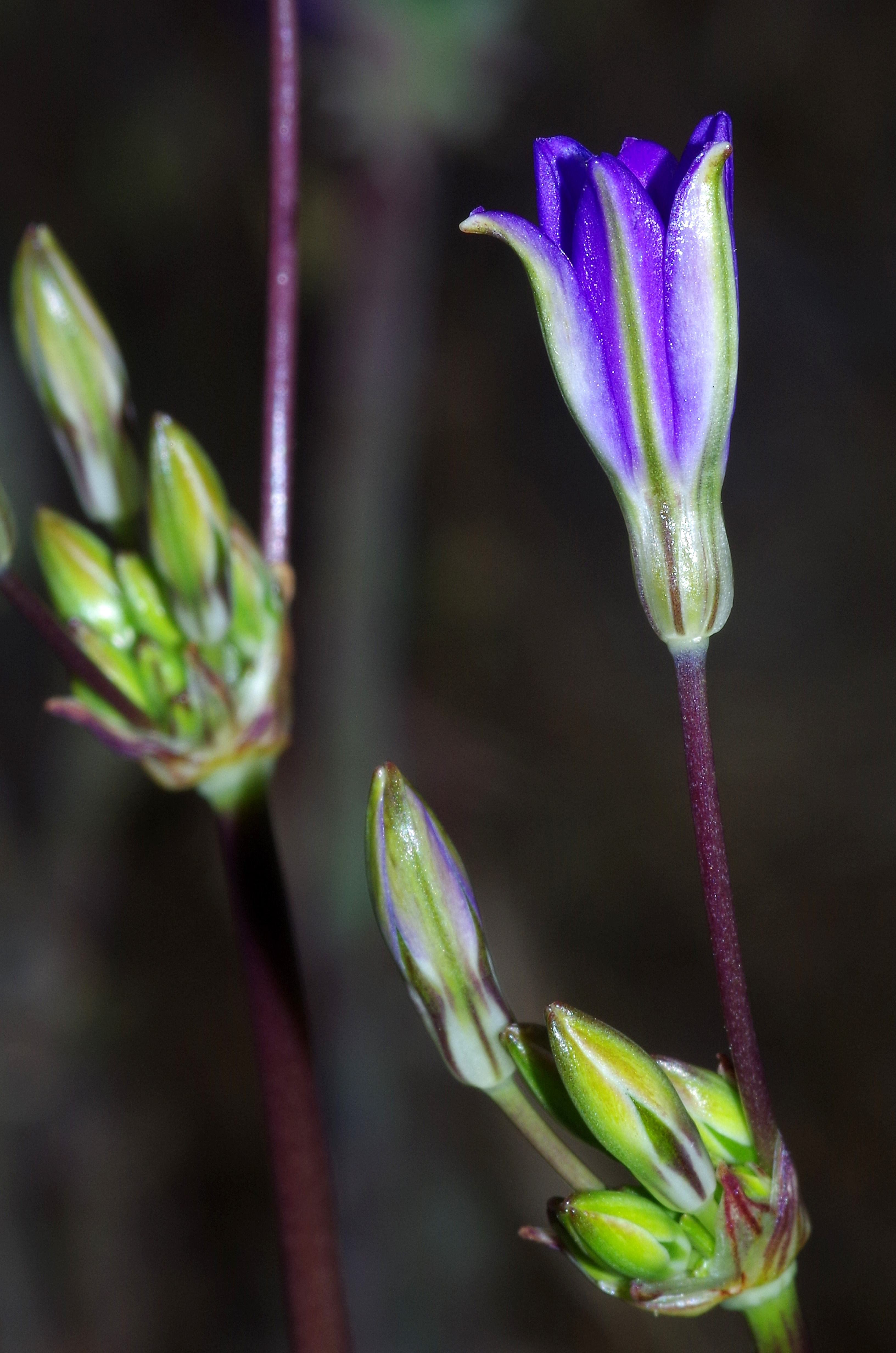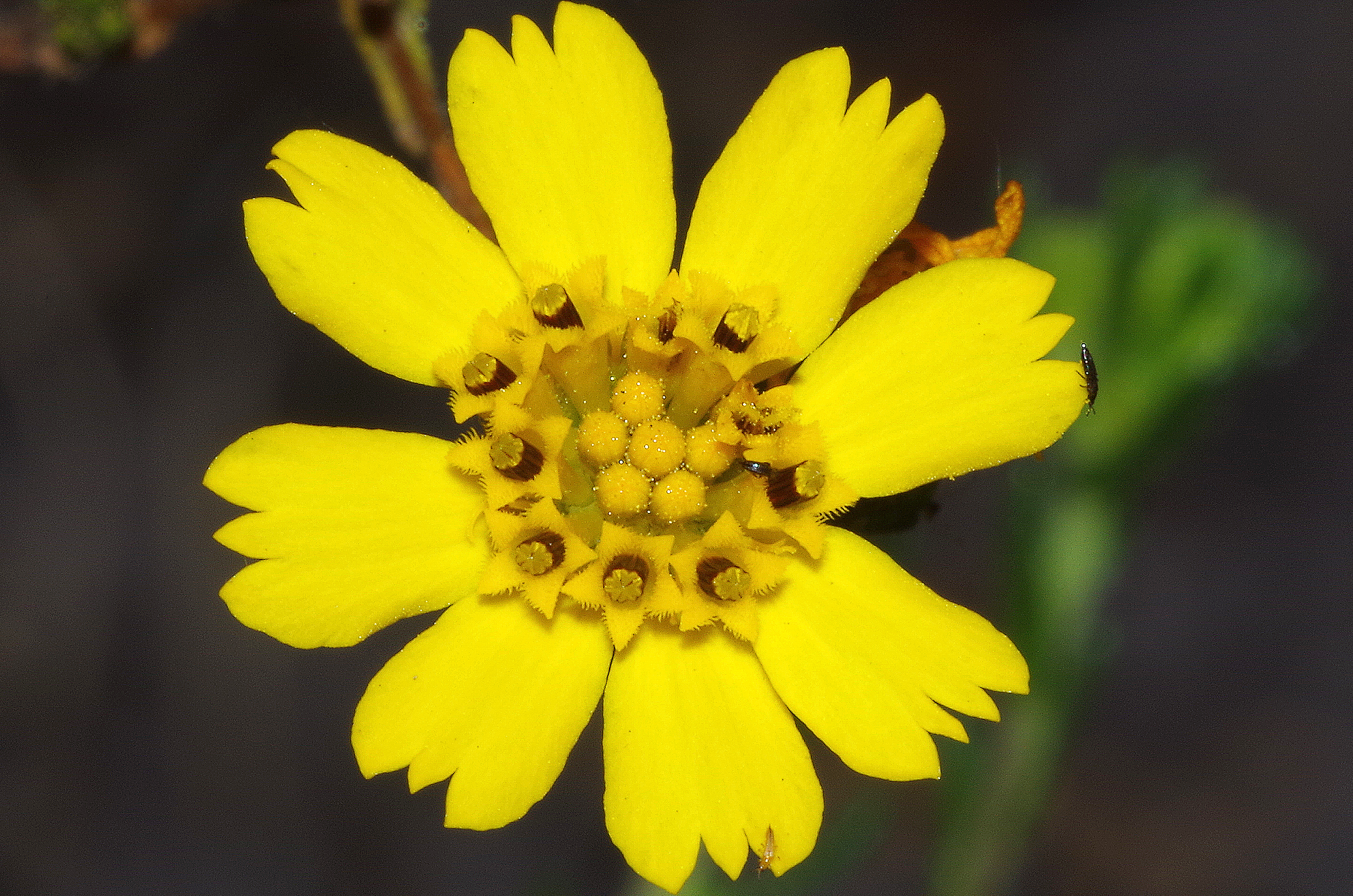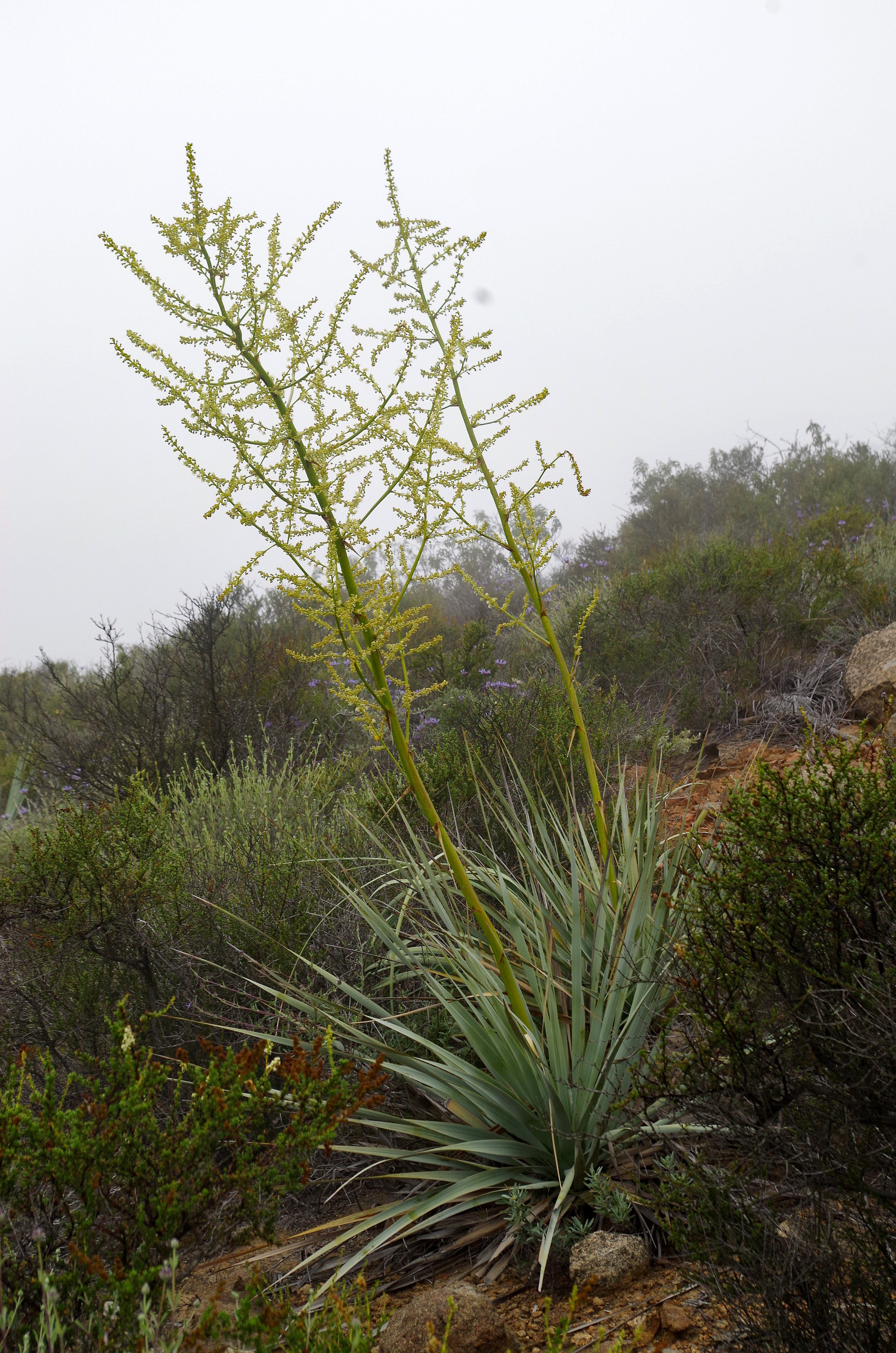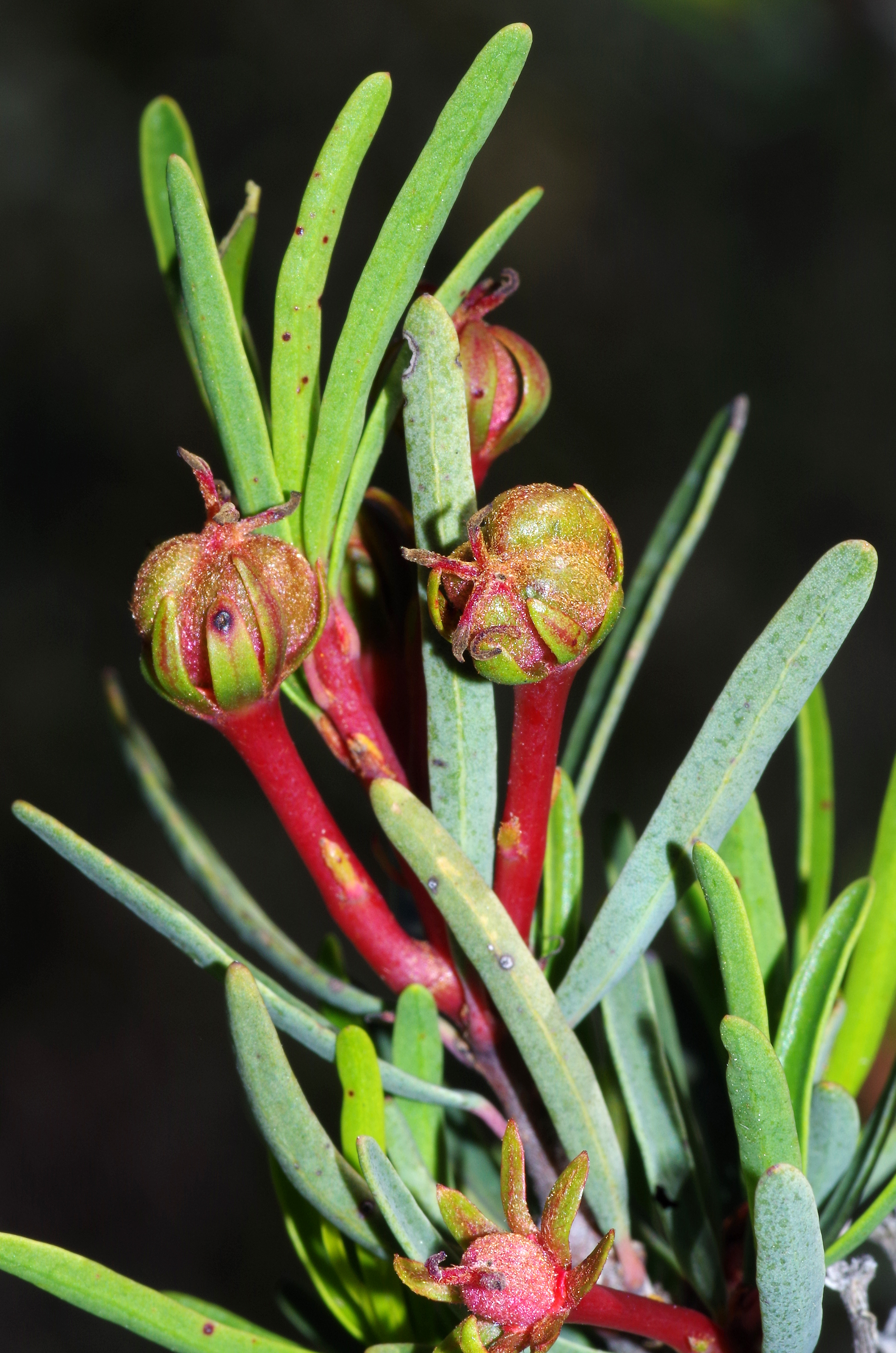Enhancing the Resilience of Edaphic Endemic Plants
The Management Strategic Plan for San Diego County requires prioritization and management for edaphic endemic plants, including the five rare plants addressed in this study. These species face low genetic diversity due to reduced population sizes, geographic isolation, and loss of pollinators. To enhance the resilience of these species across their ranges, we must manage threats to increase population sizes, identify potentially suitable habitat to connect existing populations, find or restore new populations, and provide opportunities for shifting distributions due to climate change.
This study identifies and describes geographic areas that support the five edaphic endemic species and their habitat in a design that enhances resilience and provides opportunities for shifting distributions. We developed conceptual models to inform field studies and management, refined soils and vegetation attributes, and assessed regional population structure and threats. We used results to suggest prioritized locations for surveys, management, potential translocation, and additional conservation or acquisition. Project partners (U.S. Geological Survey and San Diego Management and Monitoring Program) modeled suitable habitat for the target species under current and future climate scenarios; we reference models as appropriate.
Project Focus
Dehesa nolina, Otay tarplant, Parry's tetracoccus, San Diego thorn-mint, Thread-leaved brodiaea
chaparral, coastal sage scrub, grassland
Emily Perkins
Patricia Gordon-Reedy
Conservation Biology Institute
A & L Western Laboratories; California Department of Fish & Wildlife; San Diego Management and Monitoring Program; San Diego State University; Space and Naval Warfare Systems Command (SPAWAR); The Nature Conservancy; U.S. Fish and Wildlife Service; U.S. Geological Survey
Patricia Gordon-Reedy; Shawn Spring
Sarah McCutcheon
Shawn Spring
Parry's tetracoccus Tetracoccus dioicus
Goal: Maintain or enhance existing Parry's tetracoccus occurrences to ensure multiple conserved occurrences with self sustaining populations to increase resilience to environmental and demographic stochasticity, maintain genetic diversity, and ensure persistence over the long term (>100 years) in chaparral and coastal sage scrub vegetation communities.
MON-RES-SPEC TETDIO-3
Management units: 3, 8
In 2017, begin field research into soils and habitat relationships and conduct habitat suitability and climate change modeling for Parry's tetracoccus and other edaphic endemic plants to better understand habitat requirements and to identify and prioritize geographic areas important for connectivity, restoration, and range shifts due to climate change and other threats.
| Action | Statement | Action status | Projects |
|---|---|---|---|
| RES-1 | Test soils at potential expansion sites and compare to occupied reference sites to determine site suitability based on soils. | In progress | Enhancing the Resilience of Edaphic Endemic Plants |
| RES-2 | Prepare habitat suitability models under current environmental conditions and for different scenarios of climate change to delineate potential future habitat. | In progress | Enhancing the Resilience of Edaphic Endemic Plants |
| RES-3 | Collect covariate data on vegetation composition and cover (alliance and association-level mapping), soils, invasive plants and other threats for selected populations. | In progress | Enhancing the Resilience of Edaphic Endemic Plants |
| RES-4 | Prioritize locations for conservation, management, and future surveys based on predicted distributions and environmental correlates. | In progress | Enhancing the Resilience of Edaphic Endemic Plants |
| RES-5 | Submit project metadata, monitoring data, habitat models, analyses, and report to MSP web portal. | In progress | Enhancing the Resilience of Edaphic Endemic Plants |
| Criteria | Deadline year |
|---|---|
| Refined Models and Prioritized Future Survey Locations for Parry's Tetracoccus by 2018 | 2021 |
| Threat Name | Threat Code |
|---|---|
| Climate change | CLICHN |
| Invasive plants | INVPLA |
| Loss of connectivity | LOSCON |
| Urban development | URBDEV |
San Diego thorn-mint Acanthomintha ilicifolia
Goal: Maintain large populations, enhance small populations, and establish new populations of San Diego thornmint or pollinator habitat to buffer against environmental stochasticity, maintain genetic diversity, and promote connectivity, thereby enhancing resilience within and among MUs over the long-term (>100 years) in native habitats.
MON-RES-SPEC ACAILI-11
Management units: 3, 4, 5, 6
In 2017, continue field research into soils and habitat relationships and development of habitat suitability and climate change models for San Diego thornmint and other edaphic endemic plants to better understand habitat requirements and to identify and prioritize geographic areas important for connectivity, restoration, and range shifts due to climate change and other threats.
| Action | Statement | Action status | Projects |
|---|---|---|---|
| RES-1 | Test soils at potential expansion sites and compare to occupied reference sites to determine site suitability based on soils. | In progress | Enhancing the Resilience of Edaphic Endemic Plants |
| RES-2 | Prepare habitat suitability models under current environmental conditions and for different scenarios of climate change to delineate potential future habitat. | In progress | Enhancing the Resilience of Edaphic Endemic Plants |
| RES-3 | Collect covariate data on vegetation composition and cover (alliance and association-level mapping), soils, invasive plants and other threats for selected populations. | In progress | Enhancing the Resilience of Edaphic Endemic Plants |
| RES-4 | Prioritize locations for conservation, management, and future surveys based on predicted distributions and environmental correlates. | In progress | Enhancing the Resilience of Edaphic Endemic Plants |
| RES-5 | Submit project metadata, monitoring data and report to MSP web portal. | In progress | Enhancing the Resilience of Edaphic Endemic Plants |
| Criteria | Deadline year |
|---|---|
| Refined Models and Prioritized Future Survey Locations for San Diego Thornmint by 2018 | 2021 |
| Threat Name | Threat Code |
|---|---|
| Altered fire regime | ALTFIR |
| Climate change | CLICHN |
| Human uses of the Preserves | HUMUSE |
| Invasive plants | INVPLA |
| Loss of connectivity | LOSCON |
| Urban development | URBDEV |
Thread-leaved brodiaea Brodiaea filifolia
Goal: Maintain or enhance existing Thread-leaved brodiaea occurrences to ensure multiple conserved occurrences with self sustaining populations to increase resilience to environmental and demographic stochasticity, maintain genetic diversity, and ensure persistence over the long term (>100 years) in grassland and vernal pool vegetation communities.
MON-RES-SPEC BROFIL-3
Management units: 6, 7, 8
In 2017, continue field research into soils and habitat relationships and development of habitat suitability and climate change models for thread-leaved brodiaea and other edaphic endemic plants to better understand habitat requirements and to identify and prioritize geographic areas important for connectivity, restoration, and range shifts due to climate change and other threats.
| Action | Statement | Action status | Projects |
|---|---|---|---|
| RES-1 | Test soils at potential expansion sites and compare to occupied reference sites to determine site suitability based on soils. | In progress | Enhancing the Resilience of Edaphic Endemic Plants |
| RES-2 | Prepare habitat suitability models under current environmental conditions and for different scenarios of climate change to delineate potential future habitat. | In progress | Enhancing the Resilience of Edaphic Endemic Plants |
| RES-3 | Collect covariate data on vegetation composition and cover (alliance and association-level mapping), soils, invasive plants and other threats for selected populations. | In progress | Enhancing the Resilience of Edaphic Endemic Plants |
| RES-4 | Prioritize locations for conservation, management, and future surveys based on predicted distributions and environmental correlates. | In progress | Enhancing the Resilience of Edaphic Endemic Plants |
| RES-5 | Submit project metadata, monitoring data and report to MSP web portal. | In progress | Enhancing the Resilience of Edaphic Endemic Plants |
| Criteria | Deadline year |
|---|---|
| Refined Models and Prioritized Future Survey Locations for thread-leaved brodiaea by 2018 | 2021 |
| Threat Name | Threat Code |
|---|---|
| Climate change | CLICHN |
| Invasive plants | INVPLA |
| Loss of connectivity | LOSCON |
| Urban development | URBDEV |
Otay tarplant Deinandra conjugens
Goal: Maintain or enhance existing Otay tarplant occurrences to ensure multiple conserved occurrences with self sustaining populations to increase resilience to environmental and demographic stochasticity, maintain genetic diversity, and ensure persistence over the long term (>100 years) in native and non native grassland vegetation communities.
MON-RES-SPEC DEICON-11
Management units: 3
In 2017, continue field research into soils and habitat relationships and development of habitat suitability and climate change models for Otay tarplant and other edaphic endemic plants to better understand habitat requirements and to identify and prioritize geographic areas important for connectivity, restoration, and range shifts due to climate change and other threats.
| Action | Statement | Action status | Projects |
|---|---|---|---|
| RES-1 | Test soils at potential expansion sites and compare to occupied reference sites to determine site suitability based on soils. | In progress | Enhancing the Resilience of Edaphic Endemic Plants |
| RES-2 | Prepare habitat suitability models under current environmental conditions and for different scenarios of climate change to delineate potential future habitat. | In progress | Enhancing the Resilience of Edaphic Endemic Plants |
| RES-3 | Collect covariate data on vegetation composition and cover (alliance and association-level mapping), soils, invasive plants and other threats for selected populations. | In progress | Enhancing the Resilience of Edaphic Endemic Plants |
| RES-4 | Prioritize locations for conservation, management, and future surveys based on predicted distributions and environmental correlates. | In progress | Enhancing the Resilience of Edaphic Endemic Plants |
| RES-5 | Submit project metadata, monitoring data, habitat models, analyses, and report to MSP web portal. | In progress | Enhancing the Resilience of Edaphic Endemic Plants |
| Criteria | Deadline year |
|---|---|
| Refined Models and Prioritized Future Survey Locations for Otay Tarplant by 2018 | 2021 |
| Threat Name | Threat Code |
|---|---|
| Climate change | CLICHN |
| Invasive plants | INVPLA |
| Loss of connectivity | LOSCON |
| Urban development | URBDEV |
Dehesa nolina Nolina interrata
Goal: Maintain or enhance existing Dehesa beargrass occurrences and establish new occurrences, as needed, to ensure multiple conserved occurrences with self sustaining populations to increase resilience to environmental and demographic stochasticity, maintain genetic diversity, and ensure persistence over the long term (>100 years) in chaparral vegetation communities.
MON-RES-SPEC NOLINT-9
Management units: 3
In 2017, begin field research into soils and habitat relationships and conduct habitat suitability and climate change modeling for Dehesa nolina and other edaphic endemic plants to better understand habitat requirements and to identify and prioritize geographic areas important for connectivity, restoration, and range shifts due to climate change and other threats.
| Action | Statement | Action status | Projects |
|---|---|---|---|
| RES-1 | Test soils at potential expansion sites and compare to occupied reference sites to determine site suitability based on soils. | In progress | Enhancing the Resilience of Edaphic Endemic Plants |
| RES-2 | Prepare habitat suitability models under current environmental conditions and for different scenarios of climate change to delineate potential future habitat. | In progress | Enhancing the Resilience of Edaphic Endemic Plants |
| RES-3 | Collect covariate data on vegetation composition and cover (alliance and association-level mapping), soils, invasive plants and other threats for selected populations. | In progress | Enhancing the Resilience of Edaphic Endemic Plants |
| RES-4 | Prioritize locations for conservation, management, and future surveys based on predicted distributions and environmental correlates. | In progress | Enhancing the Resilience of Edaphic Endemic Plants |
| RES-5 | Submit project metadata, monitoring data, habitat models, analyses, and report to MSP web portal. | In progress | Enhancing the Resilience of Edaphic Endemic Plants |
| Criteria | Deadline year |
|---|---|
| Refined Models and Prioritized Future Survey Locations for Dehesa nolina by 2018 | 2021 |
| Threat Name | Threat Code |
|---|---|
| Altered fire regime | ALTFIR |
| Climate change | CLICHN |
| Invasive plants | INVPLA |
| Loss of connectivity | LOSCON |
| File name | Lead Author | Year | Type |
|---|---|---|---|
| Enhancing the Resilience of Edaphic Endemic Plants | Conservation Biology Institute | 2018 | report |




